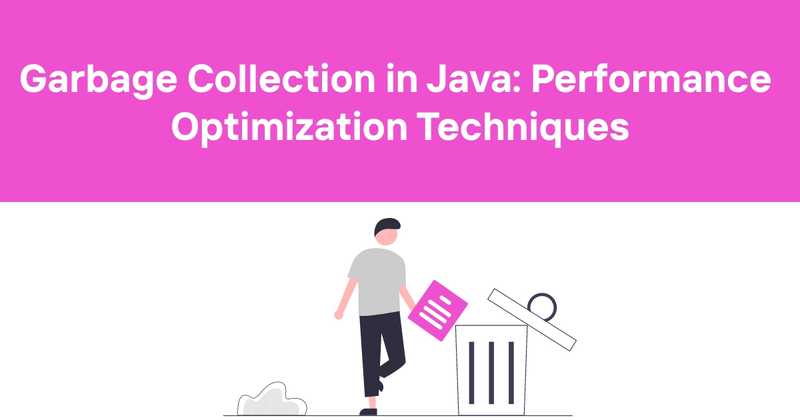Garbage Collection in Java: Performance Optimization Techniques
Java's garbage collection is one of those features that makes developers' lives easier, but can also drive us crazy when performance issues crop up. I've spent countless hours tuning garbage collection parameters and diagnosing memory leaks, so I know firsthand how important it is to understand what's happening under the hood.
Let's dig into how garbage collection works in Java, why it matters, and what you can do to make sure it's not causing problems in your applications.
Table of contents
What is garbage collection in Java?
Garbage collection in Java is an automatic memory management process that identifies and removes objects that are no longer being used by the application. Basically, it's Java's way of cleaning up after itself.
When your Java program runs, it creates objects in memory - specifically in an area called the heap. As these objects are used and then abandoned, they become "garbage" - taking up valuable memory space but no longer serving any purpose. The garbage collector finds these unused objects and deletes them, freeing up memory for new objects.
Think of it like a busy restaurant. Tables (memory) get occupied by customers (objects), and when they leave, those tables need to be cleared and reset before new customers can use them. The garbage collector is the busboy who identifies empty tables, cleans them up, and makes them available again.
Why is automatic garbage collection important?
The beauty of Java's automatic garbage collection is that it handles memory management for you. In languages like C and C++, programmers have to manually allocate and deallocate memory. This manual approach is error-prone and can lead to two major problems:
- Memory leaks: When a programmer forgets to free memory that's no longer needed
- Dangling pointers: When memory is freed but references to it still exist
I still remember the days of debugging C++ applications, hunting down memory leaks that would gradually consume all available RAM. Java's automatic garbage collection eliminates these headaches by handling memory management behind the scenes.
This automation allows developers to focus on building features rather than managing memory. The garbage collector works as a daemon thread in the background, silently keeping your application's memory usage in check.
How Java garbage collection works
Garbage collection in Java isn't just a simple process of finding unused objects and deleting them. It's a sophisticated system with multiple components and strategies. Let's break it down.
Memory structure in Java
To understand garbage collection, we first need to understand how Java organizes memory. The heap (where objects live) is divided into different areas:
-
Young Generation:
- Eden Space: This is where new objects are created.
- Survivor Spaces (S0 and S1): Objects that survive garbage collection in Eden move here.
-
Old Generation (Tenured Space): Long-lived objects that survive multiple garbage collections eventually move here.
Before Java 8, there was also a third area called the Permanent Generation (PermGen) for class metadata, but this was replaced with Metaspace in Java 8.
This generational structure is based on the observation that most objects die young (the "weak generational hypothesis"). By separating young and old objects, the garbage collector can optimize its approach for each generation.
The garbage collection algorithm
At its core, Java's garbage collector uses a "mark-and-sweep" algorithm:
-
Mark phase: The garbage collector starts from "root" objects (like static variables, local variables in the current method, active threads) and follows references to other objects, marking everything it can reach as "live."
-
Sweep phase: Once all reachable objects are marked, anything unmarked is considered garbage and can be removed.
Some collectors add a third step:
- Compact phase: After removing garbage, the remaining objects may be moved to create contiguous free space, reducing fragmentation.
Types of garbage collection in Java
Java offers several garbage collection strategies, each with its own strengths and weaknesses:
Serial Garbage Collector
This is the simplest collector, using a single thread to perform garbage collection. It completely stops application execution during garbage collection (a "stop-the-world" event).
Serial GC makes sense for small applications with minimal memory needs, but it's not suitable for most production environments because of the application pauses.
Parallel Garbage Collector
The parallel collector (also called the throughput collector) uses multiple threads for garbage collection, making it faster than the serial collector. It's the default in Java 8.
While it's more efficient than the serial collector, it still causes stop-the-world pauses, just shorter ones.
Concurrent Mark Sweep (CMS) Collector
The CMS collector tries to minimize pauses by doing most of its work concurrently with the application. It's a "low pause" collector.
CMS can significantly reduce garbage collection pauses, making it suitable for applications where responsiveness is critical. But it uses more CPU resources and can sometimes lead to heap fragmentation.
Garbage First (G1) Garbage Collector
The G1 collector is designed for larger heaps and aims to provide predictable pause times. It divides the heap into regions and can collect regions with the most garbage first.
G1 became the default garbage collector in Java 9 and is the best choice for many modern applications with larger heaps.
Z Garbage Collector (ZGC)
Introduced in Java 11, ZGC is designed for very low latency with pauses under 10ms, even with multi-terabyte heaps.
ZGC is ideal for applications that require consistent low-latency response times, but it's still evolving and may not be the best choice for all workloads.
Garbage collection events
Garbage collection in Java occurs in response to several types of events:
-
Minor GC: Collects garbage in the Young Generation when the Eden space fills up. These are relatively quick.
-
Major GC (Full GC): Collects garbage across the entire heap (Young and Old Generations). These events take longer and cause more significant pauses.
-
Mixed GC: Used by the G1 collector to collect both young regions and some old regions.
Each collection type serves a different purpose and has different performance implications. Minor collections happen frequently but are quick, while major collections are less frequent but can cause noticeable pauses.
Making objects eligible for garbage collection
An object becomes eligible for garbage collection when it's no longer reachable from any part of your program. This can happen in several ways:
- Nullifying references: When you set a reference to null, the object it pointed to may become unreachable.
student = null; // The Student object is now eligible for GC
- Reassigning references: When you reassign a reference to point to a different object, the original object may become unreachable.
- Method-local objects: When a method completes, its local variables go out of scope, and the objects they referenced may become unreachable.
Student temp = new Student(); // This object becomes eligible for GC when the method ends
// Do something with temp
}
- Island of isolation: When a group of objects reference each other but nothing else references the group, the entire group becomes unreachable.
Node next;
}
Node first = new Node();
Node second = new Node();
first.next = second;
second.next = first;
first = null;
second = null; // Both Node objects are now in an island of isolation
The finalize() method
Java provides a method called finalize() that gets called on an object before it's garbage collected. This method can be overridden to release resources or perform cleanup operations.
protected void finalize() throws Throwable {
try {
// Clean up resources
closeFiles();
releaseConnections();
} finally {
super.finalize();
}
}
But I should warn you - relying on finalize() is generally discouraged. It's not guaranteed when (or even if) this method will be called, and it can cause performance issues. Modern Java code typically uses try-with-resources or explicit resource management instead.
In fact, finalize() was deprecated in Java 9, and completely different mechanisms (java.lang.ref.Cleaner and PhantomReference) are recommended instead.
Common garbage collection issues
While garbage collection is automatic, it's not without its challenges. Here are some common issues you might encounter:
Memory leaks
Even with garbage collection, memory leaks can still happen in Java. The most common cause is unintentionally holding references to objects that are no longer needed.
For example, if you add objects to a collection but never remove them, they'll stay in memory even if they're no longer used elsewhere in your application.
class Cache {
private final List<ExpensiveObject> items = new ArrayList<>();
public void addItem(ExpensiveObject item) {
items.add(item);
// No method to remove items that are no longer needed!
}
}
Stop-the-world pauses
Most garbage collectors cause "stop-the-world" pauses where your application completely halts while garbage collection occurs. These pauses can be problematic for applications that require consistent responsiveness.
High CPU usage
Some garbage collectors, particularly concurrent ones like CMS, can use significant CPU resources. This can impact the overall performance of your application, especially on systems with limited CPU capacity.
Heap fragmentation
After many garbage collection cycles, the heap can become fragmented, with free memory scattered in small chunks throughout the heap rather than in contiguous blocks. This fragmentation can make it difficult to allocate larger objects.
Best practices for efficient garbage collection
While you can't directly control when garbage collection happens, you can optimize your code and JVM settings to make it more efficient:
1. Choose the right collector for your needs
The best collector depends on your application's requirements:
- For maximum throughput: Parallel Collector
- For low pause times: CMS or G1
- For very large heaps with low pause requirements: ZGC
2. Size your heap appropriately
Too small a heap leads to frequent garbage collections, while too large a heap can cause longer GC pauses. Finding the right balance is important.
3. Monitor and tune GC performance
Enable GC logging to understand how garbage collection is affecting your application:
4. Minimize object creation
Creating fewer objects means less work for the garbage collector. Techniques include:
- Object pooling for expensive objects
- Avoiding unnecessary boxing/unboxing
- Using primitives instead of wrapper classes when possible
- Reusing objects when appropriate
5. Manage large objects carefully
Large objects go directly to the Old Generation and can be expensive to collect. Try to limit their creation or reuse them when possible.
6. Avoid finalizers
As mentioned earlier, finalizers can cause performance issues and delay garbage collection. Use explicit resource management instead.
7. Consider weak references
For caching scenarios, consider using weak references to allow objects to be garbage collected when memory is tight:
Monitoring garbage collection performance
To effectively manage garbage collection, you need to monitor its performance. Java provides various tools for this:
JVM flags for GC logging
Enable detailed GC logging with JVM flags:
-Xlog:gc* :file=gc.log:time,uptime, level,tags
// Java 8 and earlier
-XX:+PrintGCDetails -XX:+PrintGCDateStamps -Xloggc:gc.log
JDK tools
Several JDK tools can help monitor GC performance:
- jstat: Provides statistics about garbage collection
- jconsole and jvisualvm: Graphical tools for monitoring JVM metrics, including garbage collection
Profiling tools
Professional profiling tools like YourKit, JProfiler, and VisualVM can provide deep insights into garbage collection behavior and help identify memory leaks.
Application Performance Monitoring (APM) tools
APM tools like New Relic, AppDynamics, and Dynatrace can monitor garbage collection in production environments and alert you to issues.
Real-world example: Employee management system
Let's look at a practical example to illustrate garbage collection concepts. Imagine we're building an employee management system that needs to track employees but exclude temporary workers like interns.
Here's a simple implementation:
private int ID;
private String name;
private int age;
private static int nextId = 1;
public Employee(String name, int age) {
this.name = name;
this.age = age;
this.ID = nextId++;
}
public void show() {
System.out.println("Id=" + ID + "\nName=" + name + "\nAge=" + age);
}
public void showNextId() {
System.out.println("Next employee id will be=" + nextId);
}
}
public class EmployeeManagement {
public static void main(String[] args) {
Employee E = new Employee("John", 56);
Employee F = new Employee("Jane", 45);
Employee G = new Employee("Jim", 25);
// Main employees
E.show();
F.show();
G.show();
// Expected next ID
E.showNextId(); // Should show 4
// Sub-block for interns (temporary employees)
{
Employee X = new Employee("Intern1", 23);
Employee Y = new Employee("Intern2", 21);
X.show();
Y.show();
// Next ID after adding interns
X.showNextId(); // Shows 6
// Clean up intern references - make them eligible for GC
X = Y = null;
// Request garbage collection
System.gc();
System.runFinalization();
}
// After GC, what's the next ID?
E.showNextId(); // Should show 4 if GC worked properly, 6 if not
}
}
If we run this without overriding finalize(), the next ID after the intern block will still be 6, even though the intern objects are no longer accessible. This is because the garbage collector has no way to "undo" the increments to nextId.
Let's modify the Employee class to properly handle this:
// Other code remains the same
@Override
protected void finalize() {
--nextId; // Decrement the static counter when an Employee is garbage collected
}
}
Now when the intern objects are garbage collected, the nextId will be decremented, and the next ID should correctly show 4 after the intern block.
This example illustrates how garbage collection works and how you can interact with it through the finalize() method, though as mentioned earlier, using finalize() is generally not recommended in modern Java applications.
Conclusion
Java's garbage collection is a powerful feature that automates memory management, freeing developers from the burden of manual memory allocation and deallocation. While it operates automatically, understanding how it works can help you write more efficient Java applications and troubleshoot performance issues.
Key takeaways:
- Garbage collection automatically removes objects that are no longer reachable
- Java uses a generational approach with different collection strategies for young and old objects
- Several collection algorithms are available, each with different performance characteristics
- You can optimize garbage collection by choosing the right collector, sizing your heap appropriately, and minimizing object creation
- Monitoring garbage collection performance is essential for maintaining application performance
For developers building Java applications, a solid understanding of garbage collection is invaluable. It helps you make informed decisions about memory usage, object lifecycles, and performance optimization.
When monitoring your Java applications, tools like Odown can be invaluable. Odown's uptime monitoring ensures your Java applications stay available, while its SSL certificate monitoring helps prevent certificate-related outages. The public status pages provided by Odown also keep your users informed during any garbage collection-related performance issues.
By combining good garbage collection practices with robust monitoring through platforms like Odown, you can ensure your Java applications maintain peak performance and availability.



